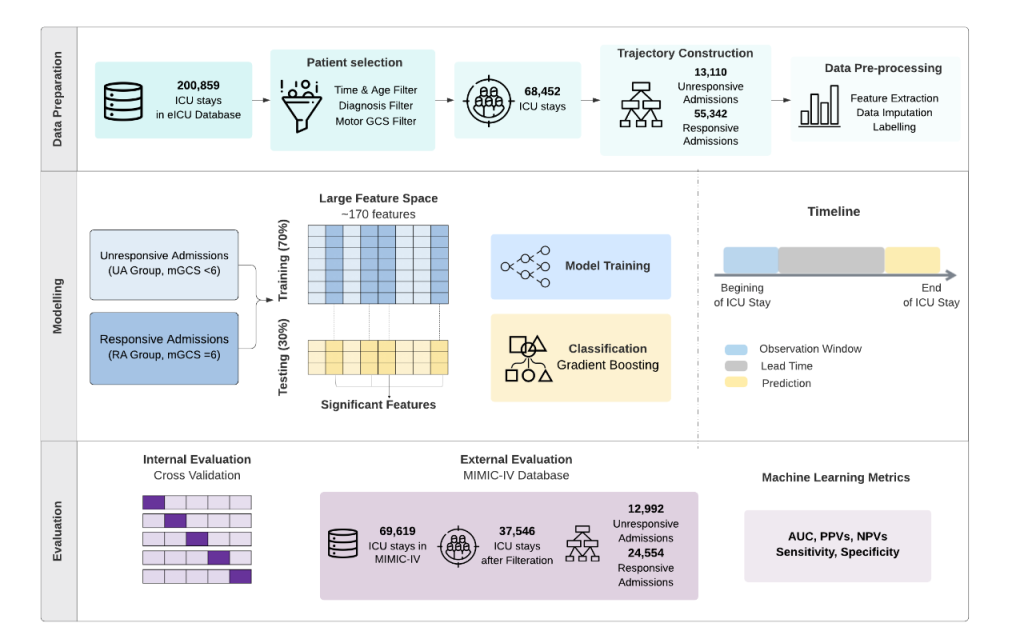Prediction of Neurological Trajectories in Non-Neurological ICU Patients
Team: Precision Care Medicine: Cyan
Program:
Biomedical Engineering
Project Description:
Coma is a medical emergency that requires rapid and precise intervention in the intensive care unit (ICU) to improve the chances of patient survival, coma emergence, and neurological recovery. A substantial number of critically ill patients who lack a primary neurological disorder may develop coma. We use machine learning techniques to predict non-neurological coma and recovery from coma using electronic health record data from ICU patients.
Team Members
-
[foreach 357]
[if 397 not_equal=””][/if 397][395]
[/foreach 357]
Project Mentors, Sponsors, and Partners
Robert D Stevens, MD
Kirby Gong
Indranuj Gangan
Raimond L Winslow, PhD
Joseph L Greenstein, PhD
Course Faculty
-
[foreach 429]
[if 433 not_equal=””][/if 433][431]
[/foreach 429]
Project Links
Additional Project Information
Project Video Transcript:
Welcome to our design day presentation. Our coma predictor project tries to predict neurological trajectories for patients without any primary neurological disorders. Loss of consciousness is a medical emergency in ICU, and our target population could show impaired consciousness even without neurological diagnosis. To uncover the physiological changes in these patients, our team decided to apply machine learning models to first 24h of electronic health data after ICU admission, drawing from two public databases: eICU and MIMIC-IV. We processed the eICU data for training and testing, selecting only adult patients with length of stay no less than 24 hours and no longer than 7 days. Then we used the motor subscore of Glascow Coma Scale, mGCS to determine responsiveness level. Patient data were classified into two independent groups: unresponsive admission, UA and responsive admission, RA. We used a binary approach to predict responsiveness at discharge, unresponsive discharge as positive and responsive discharge as negative. The performances of different classifiers on each group are shown in the middle column. After the classifications, we processed the MIMIC-IV database as an independent validation set, and analyzed what directions of features are considered important. Overall, physiological signals and lab results could accurately predict neurological function at discharge. As future direction, we are adding more robust models and improving the feature space further. Thank you.
Project Photo

Project Photo Caption:
Flow Diagram of Model Design
Project Video
Introduction of Project Poster


